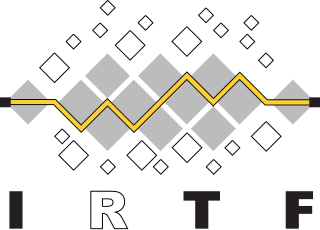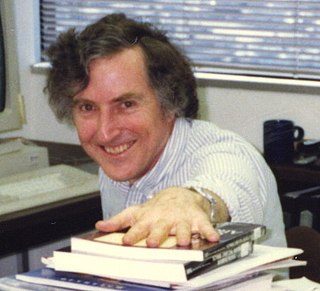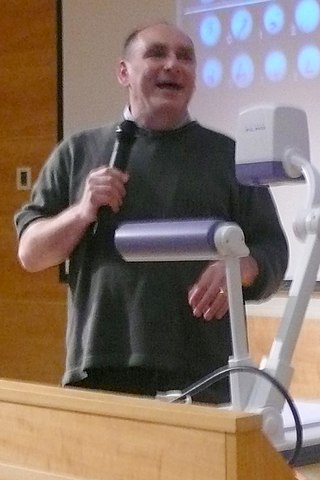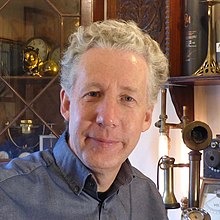In computer network engineering, an Internet Standard is a normative specification of a technology or methodology applicable to the Internet. Internet Standards are created and published by the Internet Engineering Task Force (IETF). They allow interoperation of hardware and software from different sources which allows internets to function. As the Internet became global, Internet Standards became the lingua franca of worldwide communications.

The Internet Engineering Task Force (IETF) is a standards organization for the Internet and is responsible for the technical standards that make up the Internet protocol suite (TCP/IP). It has no formal membership roster or requirements and all its participants are volunteers. Their work is usually funded by employers or other sponsors.

Internet Protocol version 6 (IPv6) is the most recent version of the Internet Protocol (IP), the communications protocol that provides an identification and location system for computers on networks and routes traffic across the Internet. IPv6 was developed by the Internet Engineering Task Force (IETF) to deal with the long-anticipated problem of IPv4 address exhaustion, and was intended to replace IPv4. In December 1998, IPv6 became a Draft Standard for the IETF, which subsequently ratified it as an Internet Standard on 14 July 2017.
The Internet protocol suite, commonly known as TCP/IP, is a framework for organizing the set of communication protocols used in the Internet and similar computer networks according to functional criteria. The foundational protocols in the suite are the Transmission Control Protocol (TCP), the User Datagram Protocol (UDP), and the Internet Protocol (IP). Early versions of this networking model were known as the Department of Defense (DoD) model because the research and development were funded by the United States Department of Defense through DARPA.
A Request for Comments (RFC) is a publication in a series from the principal technical development and standards-setting bodies for the Internet, most prominently the Internet Engineering Task Force (IETF). An RFC is authored by individuals or groups of engineers and computer scientists in the form of a memorandum describing methods, behaviors, research, or innovations applicable to the working of the Internet and Internet-connected systems. It is submitted either for peer review or to convey new concepts, information, or, occasionally, engineering humor.
The Session Initiation Protocol (SIP) is a signaling protocol used for initiating, maintaining, and terminating communication sessions that include voice, video and messaging applications. SIP is used in Internet telephony, in private IP telephone systems, as well as mobile phone calling over LTE (VoLTE).
The Transmission Control Protocol (TCP) is one of the main protocols of the Internet protocol suite. It originated in the initial network implementation in which it complemented the Internet Protocol (IP). Therefore, the entire suite is commonly referred to as TCP/IP. TCP provides reliable, ordered, and error-checked delivery of a stream of octets (bytes) between applications running on hosts communicating via an IP network. Major internet applications such as the World Wide Web, email, remote administration, and file transfer rely on TCP, which is part of the Transport layer of the TCP/IP suite. SSL/TLS often runs on top of TCP.
A multicast address is a logical identifier for a group of hosts in a computer network that are available to process datagrams or frames intended to be multicast for a designated network service. Multicast addressing can be used in the link layer, such as Ethernet multicast, and at the internet layer for Internet Protocol Version 4 (IPv4) or Version 6 (IPv6) multicast.
The Internet Architecture Board (IAB) is a committee of the Internet Engineering Task Force (IETF) and an advisory body of the Internet Society (ISOC). Its responsibilities include architectural oversight of IETF activities, Internet Standards Process oversight and appeal, and the appointment of the Request for Comments (RFC) Editor. The IAB is also responsible for the management of the IETF protocol parameter registries.

The Internet Research Task Force (IRTF) is an organization, overseen by the Internet Architecture Board, that focuses on longer-term research issues related to the Internet. A parallel organization, the Internet Engineering Task Force (IETF), focuses on the shorter term issues of engineering and standards making.
This article lists communication protocols that are designed for file transfer over a telecommunications network.
IP multicast is a method of sending Internet Protocol (IP) datagrams to a group of interested receivers in a single transmission. It is the IP-specific form of multicast and is used for streaming media and other network applications. It uses specially reserved multicast address blocks in IPv4 and IPv6.

Robert Braden was an American computer scientist who played a role in the development of the Internet. His research interests included end-to-end network protocols, especially in the transport and network layers.
The internet layer is a group of internetworking methods, protocols, and specifications in the Internet protocol suite that are used to transport network packets from the originating host across network boundaries; if necessary, to the destination host specified by an IP address. The internet layer derives its name from its function facilitating internetworking, which is the concept of connecting multiple networks with each other through gateways.

Jonathan Andrew Crowcroft is the Marconi Professor of Communications Systems in the Department of Computer Science and Technology, University of Cambridge, a visiting professor at the Department of Computing at Imperial College London, and the chair of the programme committee at the Alan Turing Institute.
QUIC is a general-purpose transport layer network protocol initially designed by Jim Roskind at Google. It was first implemented and deployed in 2012. It was publicly announced in 2013 as experimentation broadened, and was described at an IETF meeting. QUIC is used by more than half of all connections from the Chrome web browser to Google's servers. Microsoft Edge, Firefox, and Safari support it.

Multipath TCP (MPTCP) is an ongoing effort of the Internet Engineering Task Force's (IETF) Multipath TCP working group, that aims at allowing a Transmission Control Protocol (TCP) connection to use multiple paths to maximize throughput and increase redundancy.
Hybrid Access Networks refer to a special architecture for broadband access networks where two different network technologies are combined to improve bandwidth. A frequent motivation for such Hybrid Access Networks to combine one xDSL network with a wireless network such as LTE. The technology is generic and can be applied to combine different types of access networks such as DOCSIS, WiMAX, 5G or satellite networks. The Broadband Forum has specified an architecture as a framework for the deployment of such converged networks.
Protocol ossification is the loss of flexibility, extensibility and evolvability of network protocols. This is largely due to middleboxes that are sensitive to the wire image of the protocol, and which can interrupt or interfere with messages that are valid but which the middlebox does not correctly recognise. This is a violation of the end-to-end principle. Secondary causes include inflexibility in endpoint implementations of protocols.






